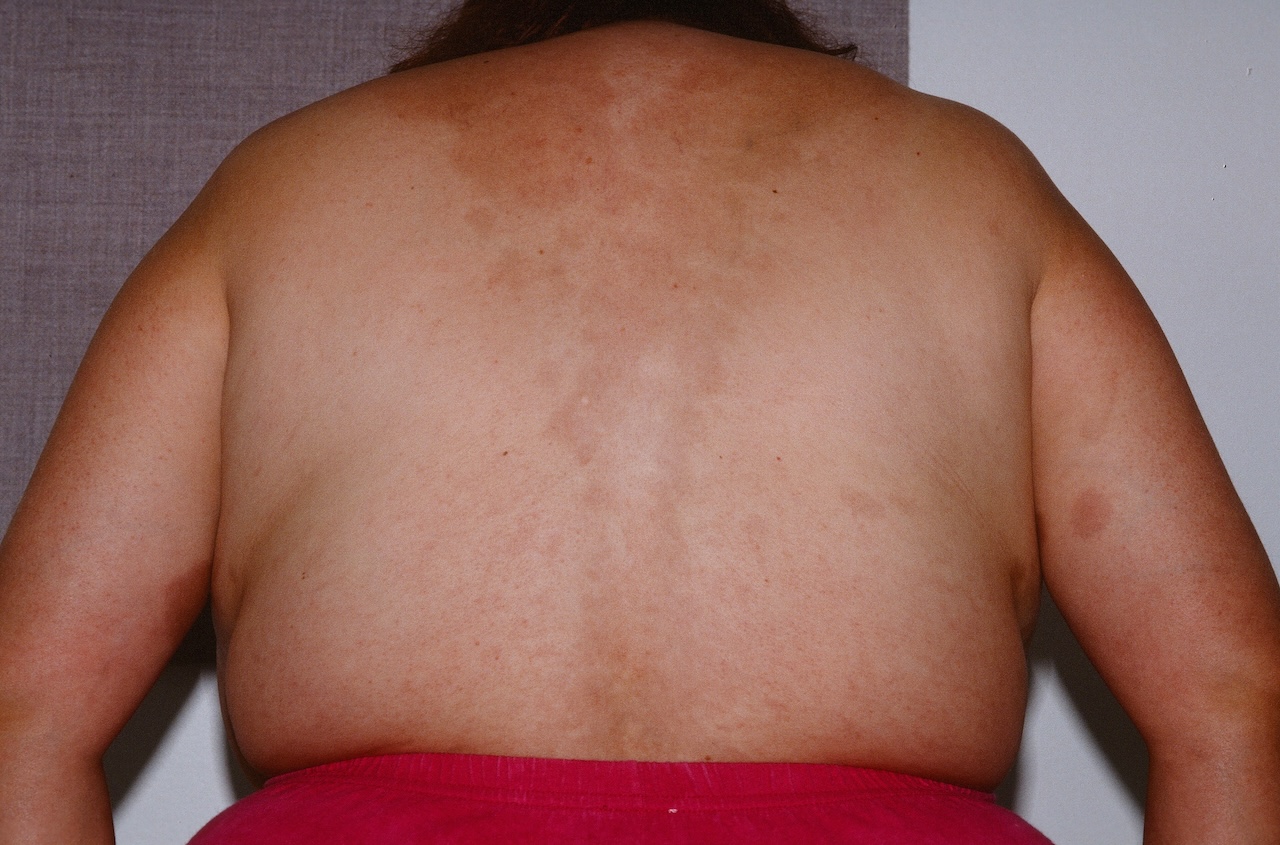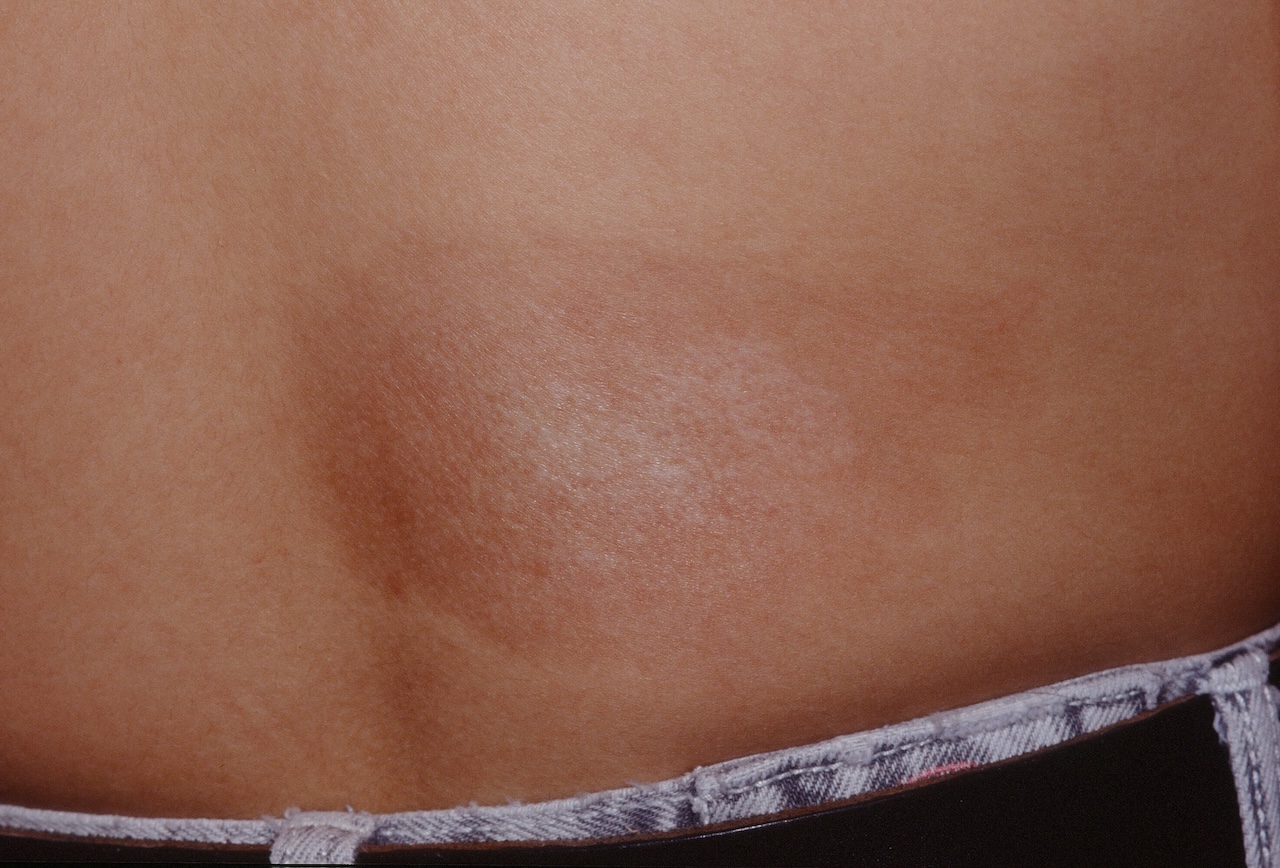
Tan to light-brown atrophic patches several to tens of centimeters in size on the back is typical of Atrophoderma of Pasini and Pierini.

Tan to light-brown atrophic patches several to tens of centimeters in size on the back is typical of Atrophoderma of Pasini and Pierini.
Atrophoderma of Pasini and Pierini (APP) is thought to be a variant of morphea that typically occurs on the back as brown, slightly atrophic areas.
Tan to light-brown atrophic patches several to tens of centimeters in size on the back occurs in this disease. They are usually symmetric and asymptomatic. Lesions may also develop elsewhere and may at times resemble morphea. The darker color of the lesions compared with the skin adds to their appearance of being depressed. However, the lesions are atrophic and some lesions' dermal atrophy is so pronounced that a distinct "drop off" at the edge is palpable. A zosteriform distribution and overlap cases with morphea and LSA may occur (see photos below). Serum antibodies to Borrelia burgdorferi have been reported positive in a proportion of patients. If the case occurs outside the US, workup for Borrelia infection should be done.

Note the central whitish color which may indicate the coexistence of lichen sclerosus.
Homepage | Who is Dr. White? | Privacy Policy | FAQs | Use of Images | Contact Dr. White